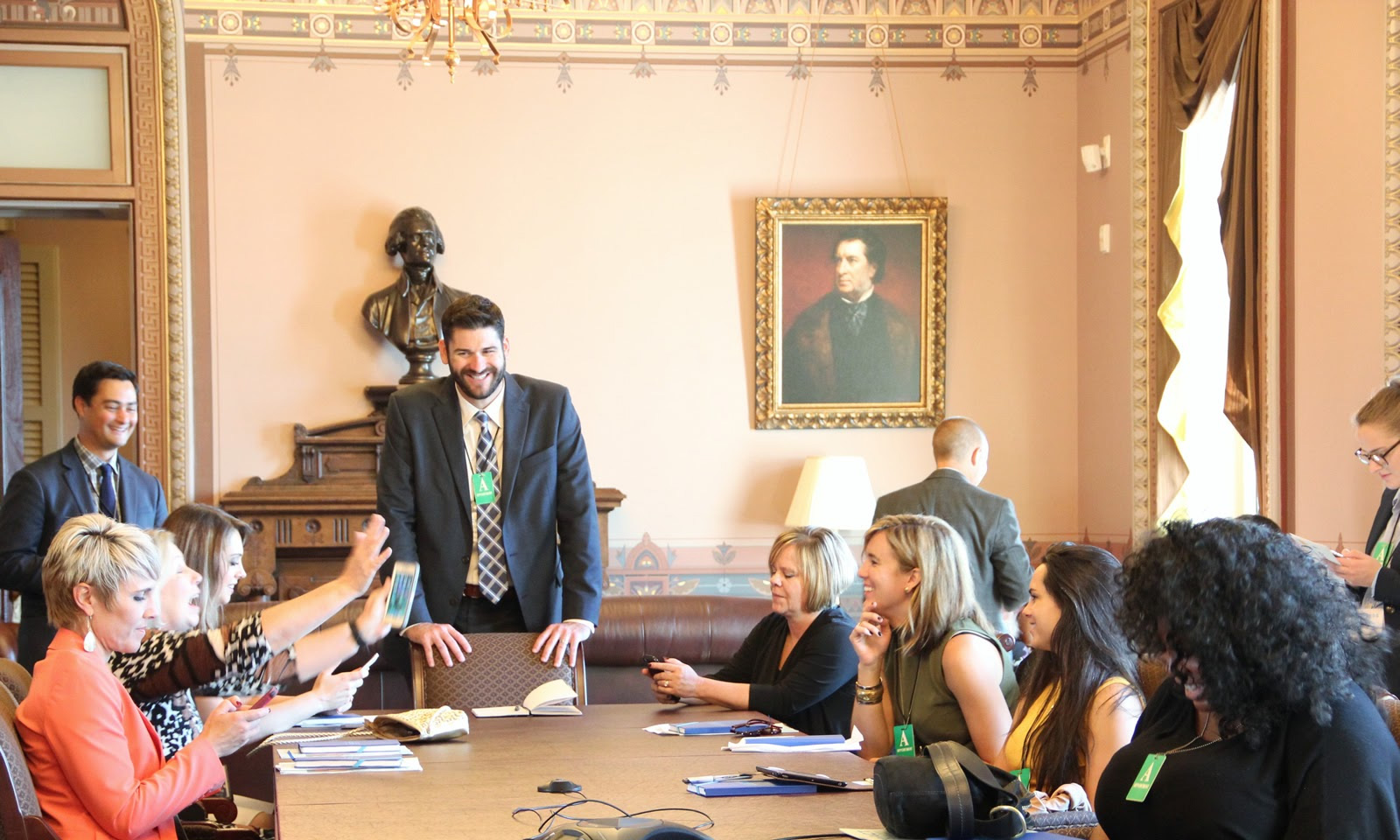Good education is good business

Last week, Colorado Springs Regional Business Alliance staff was invited to learn how the business community can contribute its expertise to ensuring a well-educated and prepared workforce at the three-day BizCares Summit in Washington, DC. Attendees included Chambers of Commerce from across the state, the Colorado Workforce Development Council, the White House Business Council, the Bill and Melinda Gates Foundation, and the Swiss Ambassador.
Businesses need a highly-trained and skilled workforce to succeed, and high school graduates increasingly need post-secondary training for career opportunities and self-sufficiency. By 2020, 3 out of 4 jobs in Colorado will require more education than a high-school diploma, and nearly 55 percent of the state’s top jobs will require science, technology, engineering, and math skills. These jobs aren’t just in high-tech: two-thirds of the nation’s computing jobs are in other industries, including healthcare, advanced manufacturing, aerospace, and finance — all important and growing industries in the Pikes Peak region.
That doesn’t necessarily mean a four-year degree. Certification, licensing, and technical training programs, apprenticeships, and flexible programs that allow high-schoolers to gain college credit are gaining attention as viable alternatives that can benefit workers and businesses. Partnerships among companies, secondary schools, and colleges such as P-TECH schools can ensure seamless college and career pathways for students, and a talented workforce pipeline for employers.
For example, a number of Colorado leaders are looking closely at the Swiss apprenticeship program as a model that might be implemented in our state. The program offers students more than 250 apprenticeship options to develop in-demand skills. Nearly 70 percent of Swiss students opt in, spending three or four days on the job and one to two days in the classroom and earning about 25 percent of the wage a regular employee would. The program has high levels of engagement and prestige, delivering work- and classroom-based instruction and employment pathways to students, a low youth unemployment rate, and an active role for the business community in defining the system’s standards. Read about a Colorado company that has adopted the apprenticeship model here.
To facilitate multiple pathways to student success and workforce readiness, a number of barriers must be addressed:
- Higher education funding, focused on traditional associate’s and bachelor’s programs, must be more flexible.
- Vocational training cannot be viewed as only for under-achieving students.
- Businesses must be more involved in shaping education standards, ensuring certifications meet needs and adequately prepare trainees, and working collaboratively with educators.
Assessing our current education system is key to identifying gaps and opportunities. At the end of last year, the Elementary and Secondary Education Act became law, replacing No Child Left Behind. The new law still requires performance testing, but gives states more flexibility in how they use the results. The State Department of Education, chaired by Colorado Springs resident Steve Durham, has formed a number of committees to write a plan to meet the new requirements. Learn more about the process here.
The Colorado Springs Regional Business Alliance will pursue a number of workforce development options based on what we learned.